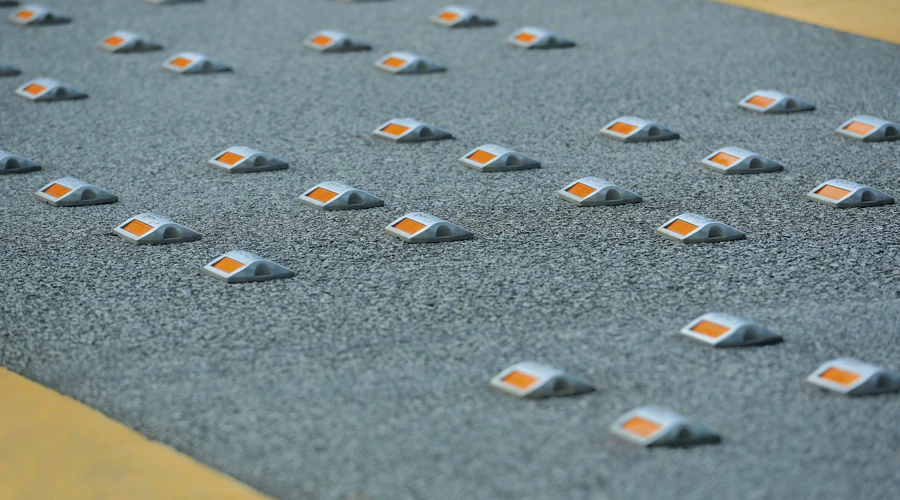Solar Road Stud
Solar road studs are flashing solar cell powered LED maintenance-free lighting devices used in road construction to delineate road edges and centrelines. Embedded in the road surface, they are an electronic improvement on the traditional cat’s eyes in that they may give drivers more than a thirty-second reaction window compared with about 3 seconds for conventional reflective devices. The intense brightness of the LEDs makes them easily visible at distances of about 900m under favourable conditions.
Averaging about 100mm square or 100mm diameter and about 40mm thick, units are extremely robust to avoid damage by passing vehicles, and are normally constructed of engineering plastics and polycarbonates. Use of solar road studs reduces the necessity of headlight main beams and the accompanying hazard of dazzling oncoming drivers. They are also more visible in rain and fog conditions where the old type retroreflectors and road markings are problematic. The solar cells charge batteries or capacitors during sunlit hours, over which period the flashing LEDs are turned off by a photoswitch.
Key Feature
- Road Delineation Lane Marking and Guidance – especially for: complicated intersections / interchanges / lane merging and on / offramps
- Accident black-spots / cluster sites Hazardous road layouts – including: bends / curves, junctions and dips (including ‘blind summits’)
- Advanced warning of fixed roadside / in-road objects – including: signage, bridge ends, traffic islands
- Areas adversely affected by poor visibility
- When street lighting is either unavailable, not cost effective or environmentally not possible
- Airports – taxiways, pushbacks, fire routes and periphery areas (including by-pass and aprons)
- Cycle path delineation and route guidance
- Others include: car parks and architectural designs
Benefits
- Improves road delineation particularly effective in poor weather
- up to 800 meters visibility irrespective of head light efficiency
- increase driver visibility and awareness to hazards
- frequency safely outside the epileptic risk zone
- reliable and robust design
- reduction in accident risk
- clear reference points at ground level
- improved driver reaction times
- avoidance of sudden braking and last minute vehicle manoeuver
- reduces use of headlight main beam
- alternative to expensive street lighting




